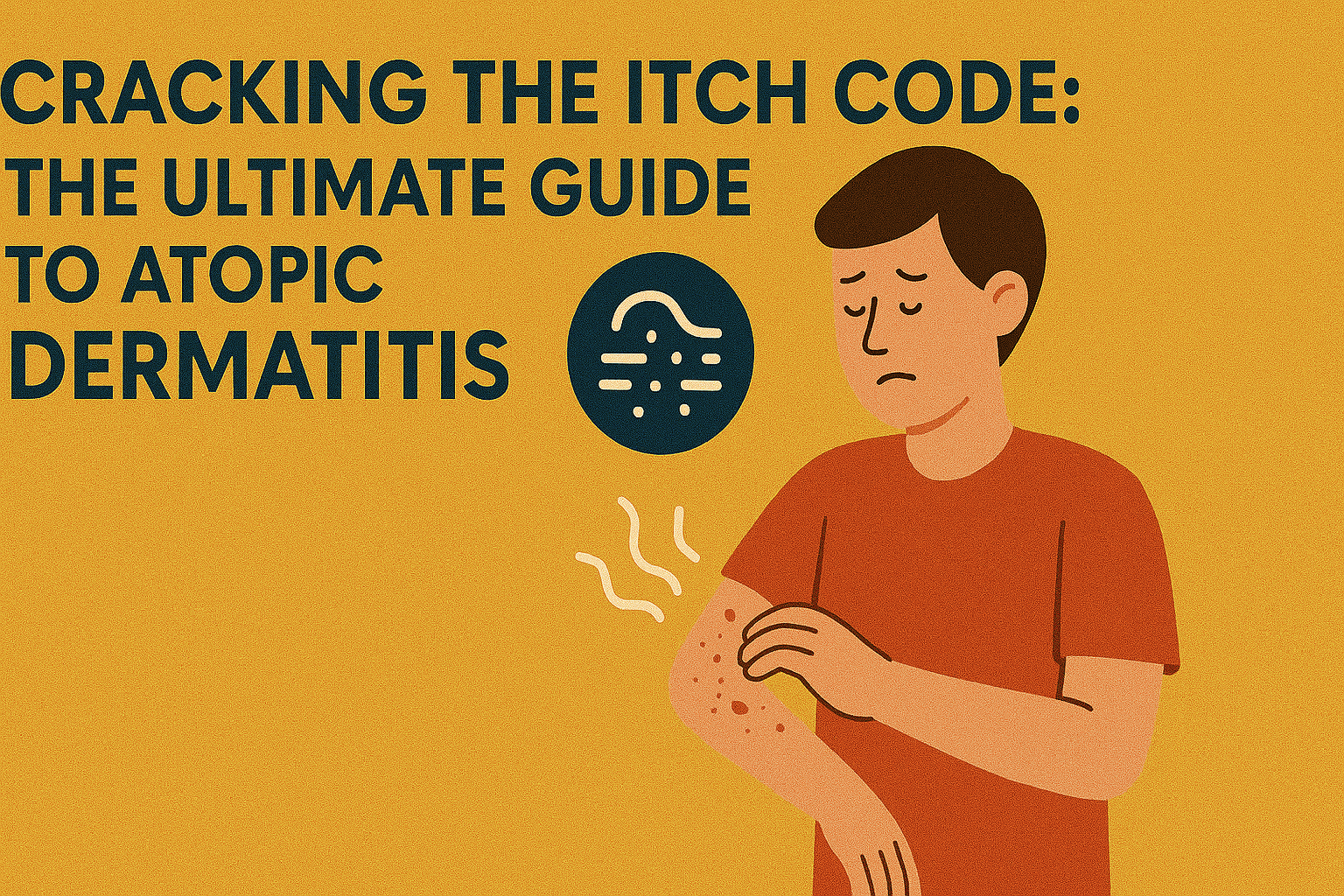“Upwards of 20% of children, as well as 10% of adults across the world, experience this condition, yet many still plumb the depths of judging it to be merely dry skin.”
Imagine having to rise each day to the perpetrators of relentless itchiness, red, inflamed skin, and a wolfish one psychologically from embarrassment and/or from a lack of sleep. That is what thousands of people experience from atopic dermatitis. This chronic skin condition can first crop up in one very young, but can also continue or develop once one is an adult.
In this encyclopedic guide, we shall discuss why atopic dermatitis is not merely a surface problem, ways to manage it well, what can go wrong in management, and the ultimate treatment offers that are changing lives. In light of a recent diagnosis for yourself or a dear one, all the clarity and tools that this article has provided.
Why Atopic Dermatitis Matters: More Than Just a Rash
Atopic dermatitis is the most common eczema and is neither minor nor a seasonal condition. These are complicated inflammation-induced conditions involving genetic, environmental, and immune factors.
Without treatment, this condition greatly lowers an individual’s quality of life by interfering with sleep and self-esteem and increasing the likelihood of infections or other allergic conditions such as asthma and hay fever.
According to a study in JAMA Dermatology, more than 60% of patients suffering from moderate-to-severe AD have symptoms that render them incapable of significant functioning in daily life, while the condition is often misdiagnosed and undertreated.
Important Points About Atopic Dermatitis
🔍 What Causes It?
AD results from the interplay of:
- Genetic predisposition (e.g., mutations in the filaggrin gene that alter the functioning of the skin barrier)
- An immune system overreaction to some allergens or irritants
- Environmental triggers like soaps, dust mites, pollen, stress, or extreme temperatures
🧬 Who’s Most at Risk?
- Children whose parents have eczema, asthma, or hay fever
- People who live in urban or colder climates
- Individuals living with food allergies or autoimmune conditions
📉 Is It Curable?
There is no cure for it presently, but long-term remission and control are possible when managed correctly.
Stepwise Management for Atopic Dermatitis
Step 1: Create a Skin Barrier
- Apply thick emollients like Vanicream, Eucerin, or CeraVe Healing Ointment at least two or three times a day.
- Use only fragrance-free, dye-free moisturizers.
Step 2: Avoid Triggers
- Keeps track of possible causes of flare-ups in a journal or undergoes patch testing.
- Use hypoallergenic detergents, do not take hot showers, and run humidifiers when the atmosphere is dry.
Step 3: Use Medications as Per Directions
- For mild flare-ups, topical corticosteroids (e.g., hydrocortisone 1%) are typically used.
- For moderate-to-severe AD, topical calcineurin inhibitors such as Tacrolimus (Protopic) or Pimecrolimus (Elidel) are indicated.
- If it is severe, then the use of biologic agents such as Dupixent (dupilumab) or JAK inhibitors such as Abrocitinib might be warranted.
Step 4: Follow the Daily Preventive Care Regimen
- Soothe with soaks in a lukewarm bath of colloidal oatmeal (say, for example, Aveeno Soothing Bath Treatment)
- Gently pat the skin dry and apply a moisturizer within 3 minutes
- Wear soft fabrics that allow breathability, such as cotton, and steer clear of wool
Case Study: Living with Severe AD — Rachel’s Life
Rachel, 32 years old, a graphic designer by profession, had been battling AI since childhood. She had tried every cream over-the-counter and every diet imaginable, but the flare-ups kept interrupting her sleep and work.
She was prescribed Dupixent by a dermatologist, and following a routine skincare regimen, including using CeraVe Moisturizing Cream and free-and-clear detergents, her symptoms almost diminished by 80%, within 6 months.
“It wasn’t just about treating the rash. It was about reclaiming my confidence,” she says.
Actionable Tips for Someone With Eczema to Try Every Day
- Follow the soak and seal method: soak the skin for 10 minutes, then seal with an emollient.
- Set a timer to be reminded of medication or moisturizing.
- Carry a travel-size bottle of moisturizer to deal with flare-ups while out of the house.
- Take time to educate family members and coworkers- there is less stigma when they understand, and a supportive environment is created.
Common Miscalculations to Avoid
❌ Stereotyping steroids: This can thin skin or beget rebound goods. Follow your croaker’s guidance rigorously.
❌ Skipping moisturizing: Indeed, on “clear skin” days, diurnal hydration is non-negotiable.
❌ Trying unverified remedies: Natural canvases like coconut or tea tree may work for some, but irritate others.
❌ Ignoring internal health: Anxiety, depression, and social withdrawal are common. Seeking support from a therapist or support group (like the National Eczema Association) can be life-changing.
The Future of Atopic Dermatitis Treatment
Thanks to improvements in immunology and biotechnology, cancer treatment is entering a new period. Then’s what to watch for
- Individualized drug based on inherited profiling
- Microbiome-based curatives that restore healthy skin bacteria
- Coming-generation biologics with fewer side effects
- Wearable tech to cover flare-ups and skin hydration in real-time
Pharmaceutical leaders like Sanofi, Pfizer, and Leo Pharma are investing heavily in innovative curatives, with multiple trials underway.
Conclusion: Your Skin, Your Strength
Atopic dermatitis may be habitual, but it doesn’t have to control your life. With the right strategy — substantiated care, harmonious routines, and staying informed — you can manage flare-ups, cover your skin, and thrive.
Take the first step today:
✅ Book a dermatologist appointment
✅ Track your symptoms and triggers
✅ Download our free AD-friendly skincare routine template
💡 “It’s not about perfect skin—it’s about healthier, happier living.”




